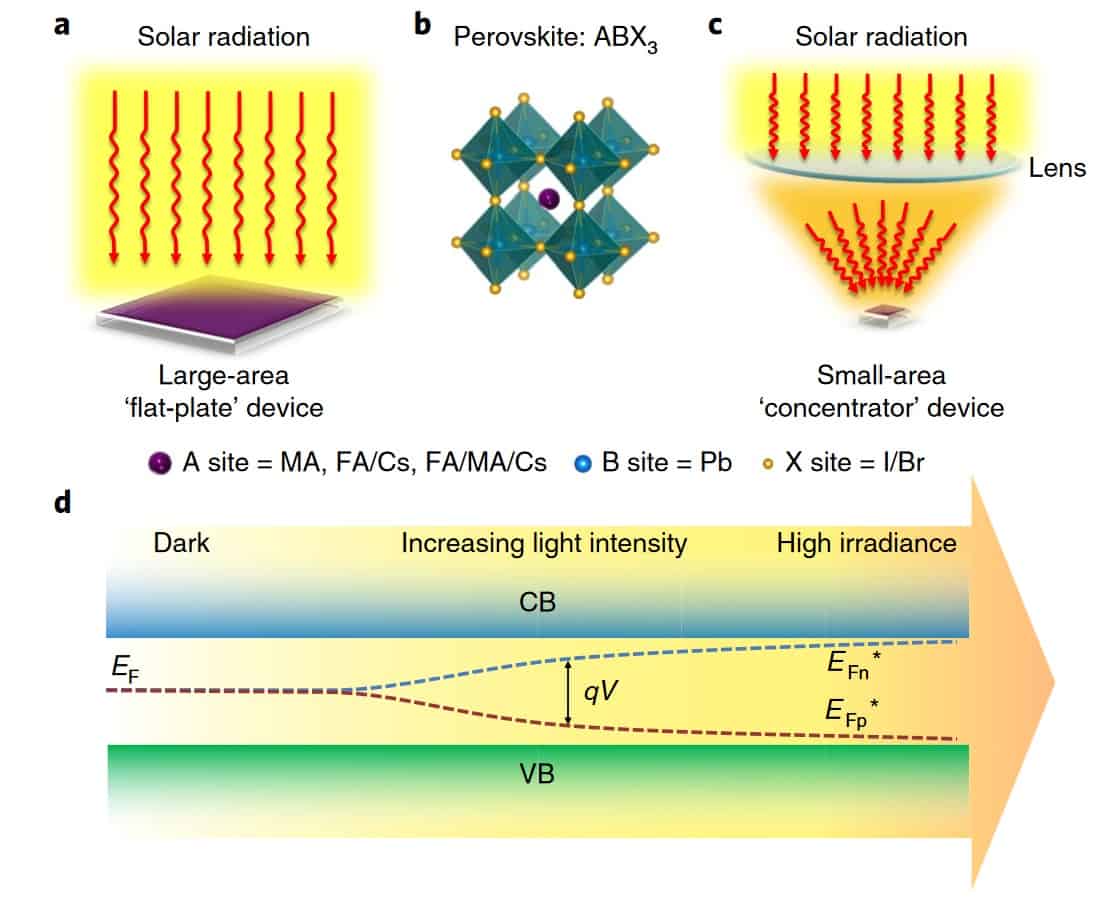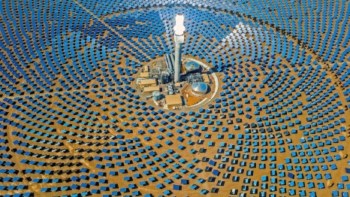
In 2014 a concentrator photovoltaic (CPV) device achieved a power efficiency of 46%, the highest reported power conversion efficiency to date. Four years later, they have failed to compete with thin film photovoltaics simply because of their high production costs. Researchers from The Photovolatic and Optoelectronic Device Group at the University of Oxford, however, have shown that perovskite-based CPVs may solve the issue of cost while providing devices that perform comparably to commercialized silicon-based devices.
The devices owe their success to metal halide perovskites, which have the chemical formula APbX3 (A is methylammonium, formamidinium or cesium, and X is iodine, bromine or chlorine). Known for their high solar power conversion efficiency, researchers have explored use of these materials in photovoltaic windows and X-ray detectors. While much research continues to focus on the fundamental properties that make these materials so attractive for these devices, issues regarding their stability have plagued advancements in their applications, particularly under light and high temperatures.
The Oxford researchers, led by Henry Snaith, focused their search on a material that would be stable under high irradiance, and found the mixed-halide perovskite Fa0.83Cs0.17PbI2.7Br0.3 served them best. The group found that their devices, when cooled constantly to maintain close to room temperature, retained 90% of their original efficiency after 150 hours spent under 10 Suns (10 kW/m2) of concentrated light.
Deteriorated but undeterred
Beyond 10 Suns of irradiance, the group observed a significant deterioration of their fill factor, a major contributor to the maximum power conversion efficiency of a solar cell. In their study recently published in Nature Energy, they have now found that the power conversion efficiency using the halide perovskite increased by 2.5% when the irradiance was increased from 1 Sun to 14 Suns , despite the deterioration of fill factor. The group’s proof-of-principle study therefore provides an opportunity to explore perovskites as an option for development of CPVs.
Going forward, much more work must be done to bring CPVs to the market – in their article, the researchers emphasize that besides improving their fill factor, the stability of perovskites remains a concern for long-term use. Once researchers characterize the material, the development and optimization of the device and its optics will also affect the device’s commercialization.



